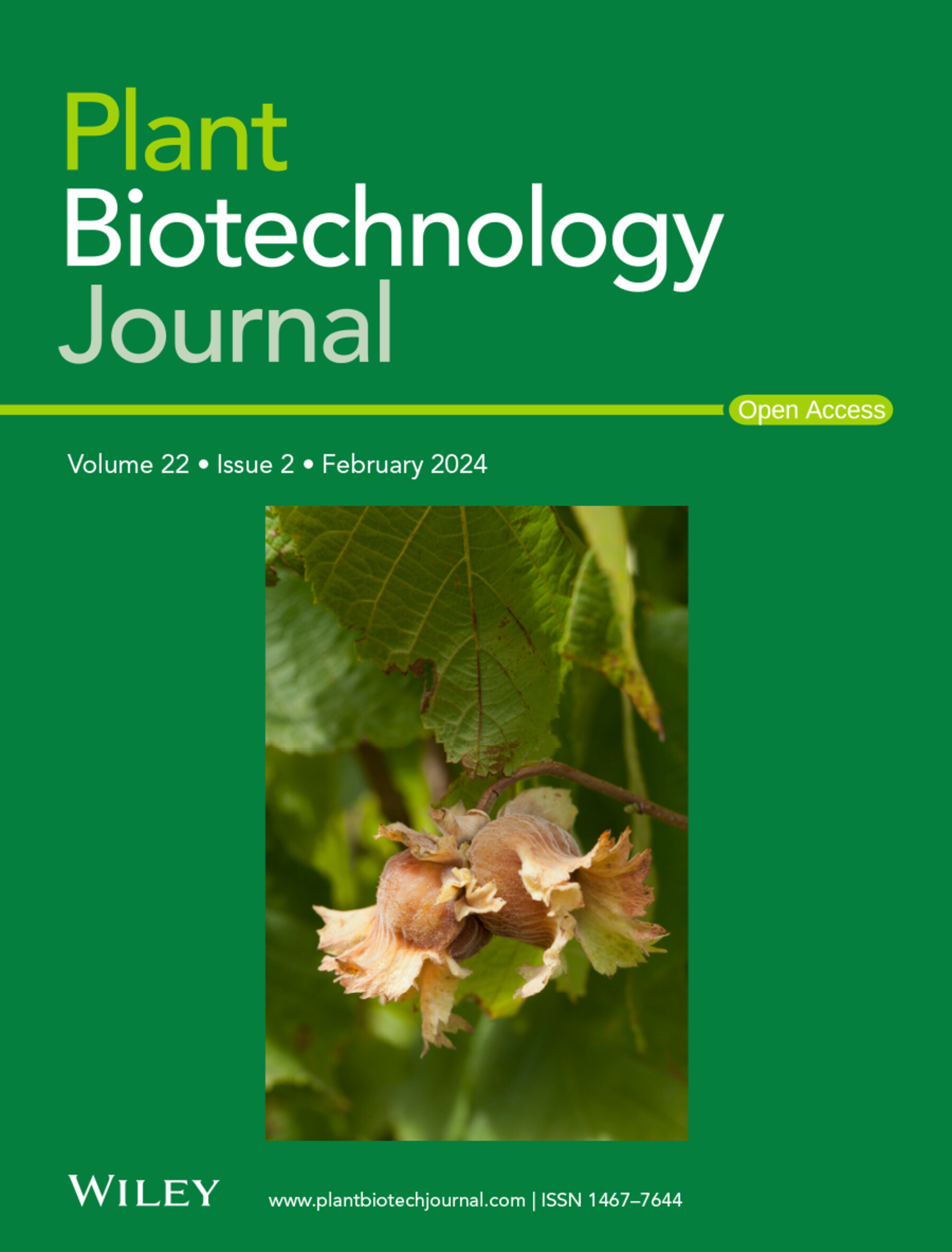Glycoalkaloid‐Free Starch Potatoes Generated by CRISPR/Cas9‐Mediated Mutations of Genes in the Glycoalkaloid Biosynthesis Pathway Enable More Sustainable Uses of By‐Products From Starch Production
IF 10.5
1区 生物学
Q1 BIOTECHNOLOGY & APPLIED MICROBIOLOGY
引用次数: 0
Abstract
Steroidal glycoalkaloids (SGAs) are toxic cholesterol‐derived secondary metabolites present in several Solanaceae species. In potato, tuber SGA levels are for reasons of toxicity of concern in both table and starch cultivars. In the latter, SGAs bind to proteins and fibres in starch production side‐streams and prevent their further uses as food and feed. To enable more sustainable uses of starch by‐products, we have here reduced SGA biosynthesis in a starch potato cultivar using DNA‐free CRISPR/Cas9. Six SGA genes were targeted, encoding enzymes acting either before cholesterol (由CRISPR/Cas9介导的糖生物碱生物合成途径基因突变产生的无糖生物碱淀粉马铃薯使淀粉生产副产品的更可持续利用
甾体糖生物碱(SGAs)是几种茄科植物中存在的有毒胆固醇衍生的次生代谢物。在马铃薯中,块茎SGA水平是由于食用品种和淀粉品种的毒性问题。在后者中,SGAs与淀粉生产侧流中的蛋白质和纤维结合,并阻止其进一步用作食物和饲料。为了实现淀粉副产品的更可持续利用,我们在这里使用无DNA的CRISPR/Cas9减少了淀粉马铃薯品种的SGA生物合成。6个SGA基因被定位为目标,它们编码的酶在降胆固醇前(SMO1‐L、DWF1‐L、DWF7‐L)或降胆固醇后(16DOX、CYP88B1、TAMiso2)起作用。编辑效率在20%到49%之间,并在温室和田间条件下对所产生的突变体进行了研究。靶质谱分析证实突变事件中SGA水平降低和固醇代谢改变。在几个事件中,株高和块茎产量降低,尽管这与低SGA水平无关。一些基因敲除突变体的叶片和块茎几乎没有SGA,后者也在两种诱导SGA的条件下。同样,从突变块茎淀粉生产过程的侧流中分离出的纤维和蛋白质组分具有非常低的SGA水平。相比之下,相应的野生型SGA水平分别比推荐的安全上限高出近10倍和40倍。结果表明,不含糖生物碱的突变体可以在温室和田间条件下产生和生长,产量适度下降。这表明SGA基因敲除块茎的淀粉生产侧流具有可持续生产高价值产品的潜力,例如食品级蛋白质和纤维。
本文章由计算机程序翻译,如有差异,请以英文原文为准。
求助全文
约1分钟内获得全文
求助全文
来源期刊

Plant Biotechnology Journal
生物-生物工程与应用微生物
CiteScore
20.50
自引率
2.90%
发文量
201
审稿时长
1 months
期刊介绍:
Plant Biotechnology Journal aspires to publish original research and insightful reviews of high impact, authored by prominent researchers in applied plant science. The journal places a special emphasis on molecular plant sciences and their practical applications through plant biotechnology. Our goal is to establish a platform for showcasing significant advances in the field, encompassing curiosity-driven studies with potential applications, strategic research in plant biotechnology, scientific analysis of crucial issues for the beneficial utilization of plant sciences, and assessments of the performance of plant biotechnology products in practical applications.
 求助内容:
求助内容: 应助结果提醒方式:
应助结果提醒方式:


